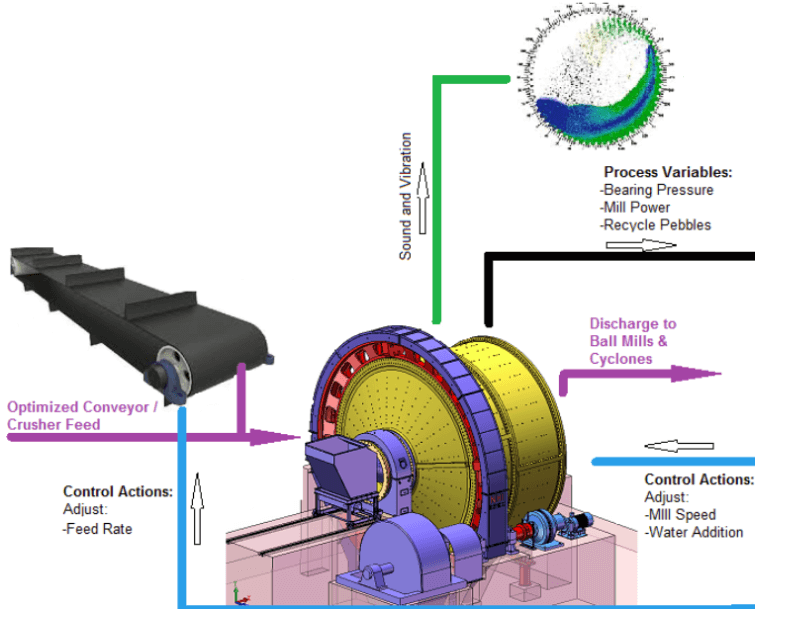 One area of major importance for the identification of impending problems are the feed belts. By visually estimating the PHYSICAL CHARACTERISTICS of the ore it is possible to have advance warning of change in many of the variables. Feed size is the most apparent, if the crush is supposed to be minus 3/8 of an inch, any change in the overall size is readily noticeable. When this happens, contact the crushing department, the crushers may need SIZING. If the size of the crush is not uniform, and the amount of the oversized material is minimal, the probable cause could be a malfunction in the sizing equipment within the crushing plant. The operators there may not be aware of the problem and will appreciate the information.
One area of major importance for the identification of impending problems are the feed belts. By visually estimating the PHYSICAL CHARACTERISTICS of the ore it is possible to have advance warning of change in many of the variables. Feed size is the most apparent, if the crush is supposed to be minus 3/8 of an inch, any change in the overall size is readily noticeable. When this happens, contact the crushing department, the crushers may need SIZING. If the size of the crush is not uniform, and the amount of the oversized material is minimal, the probable cause could be a malfunction in the sizing equipment within the crushing plant. The operators there may not be aware of the problem and will appreciate the information.
If however the ore is becoming very dry at the same time then the fine ore storage is probably running empty. The ore becomes dry due to the length of time that the coarse ore is trapped in the COARSE ORE ZONE, of the holding area. This if you remember was discussed earlier in the section on classification in storage areas.
As important as the overall size of the feed is, it isn’t the only thing that the operator should watch for. The RATIO between the fine ore and the coarse ore is important as well. Remember the larger the feed the longer the retention time in the mill must be to grind it. The very fine ore that is fed into the mill will require little or no grinding. This small ore will have less retention time than the larger ore because the size allows it to become a slurry that much faster. This increases the speed or velocity that it travel through the mill leaving the coarse ore the extra room required to grind it. If however this finer material isn’t there and the volume on the belt is made up of all course ore, that requires extended grinding time, the efficiency of the mill is greatly reduced simply by becoming over loaded.
If you are maintaining strict tonnage control this overloaded condition may be compounded by one more factor. As the fine material gradually decreases the belt weight will begin to drop. If you compensate for this loss by trying to bring the tonnage back to its set point. This increase in the volume of the larger ore to the already overloaded mill will result in even worse grinding results.
There are two reason that the belt weight will drop. The apparent one is to do with how densely the ore is packed on the belt. The finer ore and dust will fill all the little air spaces and crevices that are between the bigger rocks. When the FINES, as they are called, are removed there just isn’t as much ore on the belt as there was before.
The other reason is MOISTURE, the surface area of the fines are greater than the surface area of the coarse particle. This extra surface will hold more moisture. That means a lot of extra water. Here is an example. If there is a one percent increase of weight due to water in a mill capable of milling twenty thousand tons of ore per day, which means, two hundred tons of the twenty thousand tons is extra water? Of course, the opposite is true too. If the feed happens to get finer, the belt weight will go up, the ore will be easier to grind and results will get better. This means that the operator may be able to increase the feed rate to the mill.
By what you have just learned it is apparent that the ratio between ore sizes, is a very important variable. Our next variable will give you the necessary information and methods to use the size ratio as a production control.
